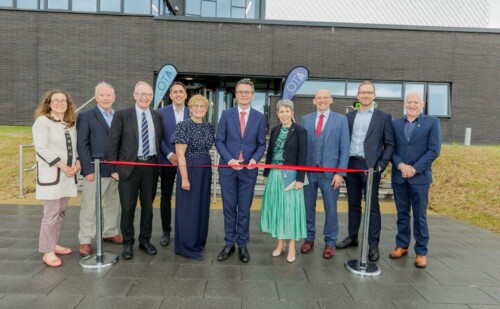
HEA Statistics Newsletter Quarter 4 2022

HEA Statistics
Posted: 2 December, 2022
Welcome to the fourth edition of the HEA Quarterly Statistics Newsletter.
In this issue we will be talking about the newly released Graduate Outcomes Survey 2021 report; the Socio-Economic Profiles 2020/21 report; our featured dashboard: HEA Statistics At A Glance; a new video to mark the 50th anniversary of the HEA; and news of the latest key dates, deadlines and events.
We hope you find this newsletter interesting and informative, let us know your feedback, or anything you would like included in future editions, at statisticsnews@hea.ie. You can sign up to receive this newsletter direct to your inbox here.
Graduate Outcomes Survey 2021
The latest Graduate Outcomes Survey for the Class of 2021 is out now.
Our website has the latest statistics available in an online report, complemented by a series of interactive dashboards. The key findings are as follows:
- 72,148 graduates across 23 HEIs (54% female; 46% male)
- The overall response rate is 50.3%.
- Overall, 81.9% of graduates are in employment nine months after graduation (up from 75.9% for the Class of 2020 and 80.1% for the Class of 2018). Employment is highest for Education graduates (94.2%) and lowest for Arts & Humanities graduates (65%).
Findings are broken down by level of study and some of the key findings for Undergraduate Honours Degrees are as follows:
- 63.7% of graduates are on permanent or open-ended contracts.
- The most common occupation is Professional Occupations (49%).
- Nine months after graduation, 91% of employed graduates are working in Ireland. Dublin is the most common county of employment (43.1%), followed by Cork (13.8%) and Galway (7.1%).
- 53% of graduates completed internships. This is down from 61.6% in 2020.
- More than six in ten graduates consider their course Very Relevant or Relevant to their job (62.8%).
- The most common sources of employment include Personal Contacts (19.8%), Recruitment Sites (19.7%), and already working there (17.3%).
You can access data for other levels of study, along with details of internationally-domiciled graduates, graduate earnings and read some key literature on the broader outcomes from higher education at the link below.
Read Graduate Outcomes Report here
For readers who wish to see trends over the last five years, the All Years Dashboard shows how employment and further study trends have changed since the introduction of the survey in 2017
You can also download details of graduate numbers directly from our website.
Download the latest graduate data
Socio-Economic Profiles 2020/21
The HEA uses Deprivation Index Scores (DIS) to assess the socio-economic profiles of higher education students in Ireland. The main findings from the latest report, relating to students of 2020/21, are as follows:
- One in ten higher education students in Ireland are disadvantaged, while one in five are affluent (29% are Marginally Below Average, and 42% are Marginally Above Average). Compared to 2019/20, this is largely the same.
- The average DIS score in 2020/21 is 2.1; in 2019/20, this was very similar at 2.0.
- Postgraduate students tend to be more affluent (DIS = 3.8) than Undergraduate students (DIS = 1.7). One in four Postgraduate students are affluent.
- While 24% of affluent students are engaged in Postgraduate studies, only 13% of disadvantaged students are engaged in Postgraduate studies.
- By entry basis of Undergraduate New Entrants, students entering through the HEAR scheme are most disadvantaged, where one in three are disadvantaged. In contrast, students entering through the DARE scheme are, on average, most affluent, where one in four are affluent.
- 3 in 4 affluent students enter higher education through second level school leaving exams, compared to 59% of disadvantaged students. For disadvantaged students, 13% are entering through Mature Years, and 10% are entering through a further education award or equivalent.
- By detailed field of study, Child Care and Youth Services are most disadvantaged (DIS = -2.2), while Economics students are, on average, most affluent (DIS = 6.8).
- Students from Dublin are most affluent (DIS = 6.3), while students from Donegal are most disadvantaged (DIS = -5.5).
- The median travel time for students from their home address to their institute is 43 minutes.
More detail is available at the link below.
Socio-Economic Profiles 2020/21
Featured Dashboard: HEA Statistics At A Glance
This dashboard provides an overview of HEA statistics, including student and graduate numbers, completion and progression rates, and socio-economic profiles.
Click on each icon for more information on that area and you will also be directed to more detailed interactive dashboards.
Did you know...?
…that the HEA turned 50 in 2022? Check out the HEA 50 Statistics video, showcasing how higher education has changed over the last half century.
Key deadlines, events and reports
Roadshows: We’ve now completed our roadshows with our stakeholders for 2022, giving HEIs, agencies and departments an insight into the data available online.
November Student Record System returns: The deadline for the November provisional student number returns was the 30th of November. HEIs with queries should contact statistics@hea.ie.
Forthcoming reports: In early 2023 two new graduate outcomes reports will issue: Graduate Outcomes for graduates with disabilities and Graduates Outcomes by socio-economic background. We will feature these in our 2023 Q1 issue
View our statistical publications
We’d like to wish all our readers a very happy Christmas and New Year.
And if you have any comments, feedback or suggestions for future newsletters, please do let us know at statisticsnews@hea.ie!


